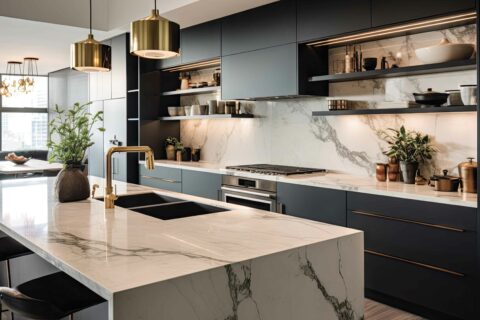February 20, 2023 • Mountain Living
How Can You Access Your Home Equity?
By Trisha Isaac, Canmore Mortgage Solutions
We’re all facing the reality of high prices, especially here in the Bow Valley. I’ve been talking a lot with clients lately about how they can use the equity in their homes to improve their overall financial situation or purchase an investment property. There are a few ways you can access equity in your home. Ultimately, it comes down to your current situation and what you plan to do with the cash.
Refinance with a Standard Mortgage
Mortgages can be used to take advantage of the equity in your home. With appraised values higher in some places right now, this can be a good solution to access money for a number of reasons such as paying off higher-interest debt, a down payment for another property, or investment opportunities.
Refinancing with a standard mortgage generally means paying out your existing mortgage, and replacing it with a new one which can be up to 80% of today’s appraised value.
You will continue to make principal and interest payments on the new amount with the typical mortgage options you most likely have today. You can keep your amortization the same or increase it back to 25 or 30 years.
Home Equity Line of Credit
A home equity line of credit (HELOC) also allows you to borrow up to 65-80% of the equity in your home. The main difference is that the HELOC can have up to 65% of your equity as a revolving credit product, like a credit card, and the additional 15% minimum as a fixed portion principal and interest payment like a standard mortgage.
Some lenders offer HELOCs that can be combined with a mortgage, called a readvanceable mortgage. As you pay down your mortgage, the amount of credit available in your HELOC will go up, since the equity in your home increases.
HELOCs tend to have variable interest rates for the line of credit portion and don’t require a principal and interest payment. At a minimum, you’re required to pay interest on the funds used. A HELOC is a registered charge on your property’s title and is considered a mortgage. When your home sells, the HELOC is paid in full and closed.
A Reverse Mortgage
If you are a Canadian homeowner over 55 years old, a reverse mortgage is a great way to access your home equity.
A reverse mortgage allows you to access up to 55% of your home’s appraised value. Depending on the type of product you’re eligible for, you can access this equity through a lump-sum amount or as a lump-sum with advances over time.
You do not have to make regular mortgage payments as long as your home is your primary residence. All you have to do is keep making your regular property taxes, home insurance, and keep your home maintained.
The Pros and Cons of a Standard Mortgage
Refinancing your mortgage can be a great option if you want to do something specific with the lump sum, such as pay down debts or complete renovations.
A standard mortgage has the benefit of a set borrowed dollar amount with a fixed or variable rate which may fit your budget better. Some borrowers only want what is required without access to additional funds.
It is important to note that there will be limits on prepayment privileges and a penalty to pay off a standard mortgage in full before the end of your term. As mentioned, you can use a standard mortgage to assist with cash flow and budgeting by lowering payments through increasing the amortization in the short term.
An example where this may work is starting a family. A lower payment in the short term could be beneficial to allow a parent to stay home longer. Prepayment options will allow you to increase your payments if you both go back to work full-time.
The Pros and Cons of a HELOC
A HELOC is attractive because of its flexibility. You are only required to pay interest on the funds used. This can be a great option if you have fluctuating expenses, like running a business, sending your child to post-secondary school, or renovations that may take several months to complete. Because the HELOC is revolving, you have access to these funds at any time, as long as you have credit available. And, you can pay down the amount owing without penalty.
If you have a readvanceable HELOC, you have ongoing access to the increased equity in your home. As your mortgage is paid down, the available credit on your HELOC will increase (potentially up to 80% of your home’s value).
But, with flexibility comes risk. Because there is no principal payment required, it’s easy to start racking up credit faster than it’s being paid down. And as the amount owing on the HELOC increases, so does the minimum interest payment. You could quickly find you’re paying several hundreds of dollars a month just on interest if you’re not careful with your spending.
HELOCs have also become more expensive with the increase in variable rates. Almost all HELOCs have a variable rate, so the cost of this product has increased significantly over the last year. Always shop around for your HELOC as the rates can differ significantly between lenders.
What Happens to a Mortgage or HELOC When You Sell?
Because both of these products are tied to your home, a mortgage or HELOC will need to be paid off in full when you sell your home. Makes sense, right? You no longer own the home, so you don’t have collateral to back your loan or line of credit.
For both of these collateral options, you’ll need to decide how long you plan to stay in your home. If you think you might be moving within or at the end of your mortgage term, you should consider what’s the best product to minimize costly penalties.
Even If You Already Own a House, You Still Need to Qualify
Even if you have already qualified for your mortgage, you’ll still need to go through a similar qualification process to refinance your mortgage or add a HELOC. The lender needs to verify there’s significant equity in your home and that you’ll be able to repay the amount received.
The process is similar to a reverse mortgage where you do have to meet a set of criteria to access the equity in your home.
Which Equity Option Is Best?
Do you need to cover a one-time cost or ongoing costs? Do you like fixed payments versus flexible? Are you planning to stay in your home for a long time? Can you follow a budget so payments don’t get out of hand?
Are you using the lump sum to free up credit and then buy more with the available credit? That gets risky especially when your home is being used as collateral. If you’re using the loan to pay down credit cards, you want to ensure you are able to manage your credit facilities going forward.
A good tip after refinancing your mortgage is to set up your credit cards to be paid in full each month from your bank account so that you only spend what you can pay each month. This prevents your card balance from sneaking higher each month. Added bonus is you will never pay interest!
Once you know the answer to these questions, you’ll have an idea of what equity option works best for you. Talk to a mortgage broker to work through each option and put together a plan so you can access the equity in your home with confidence.



